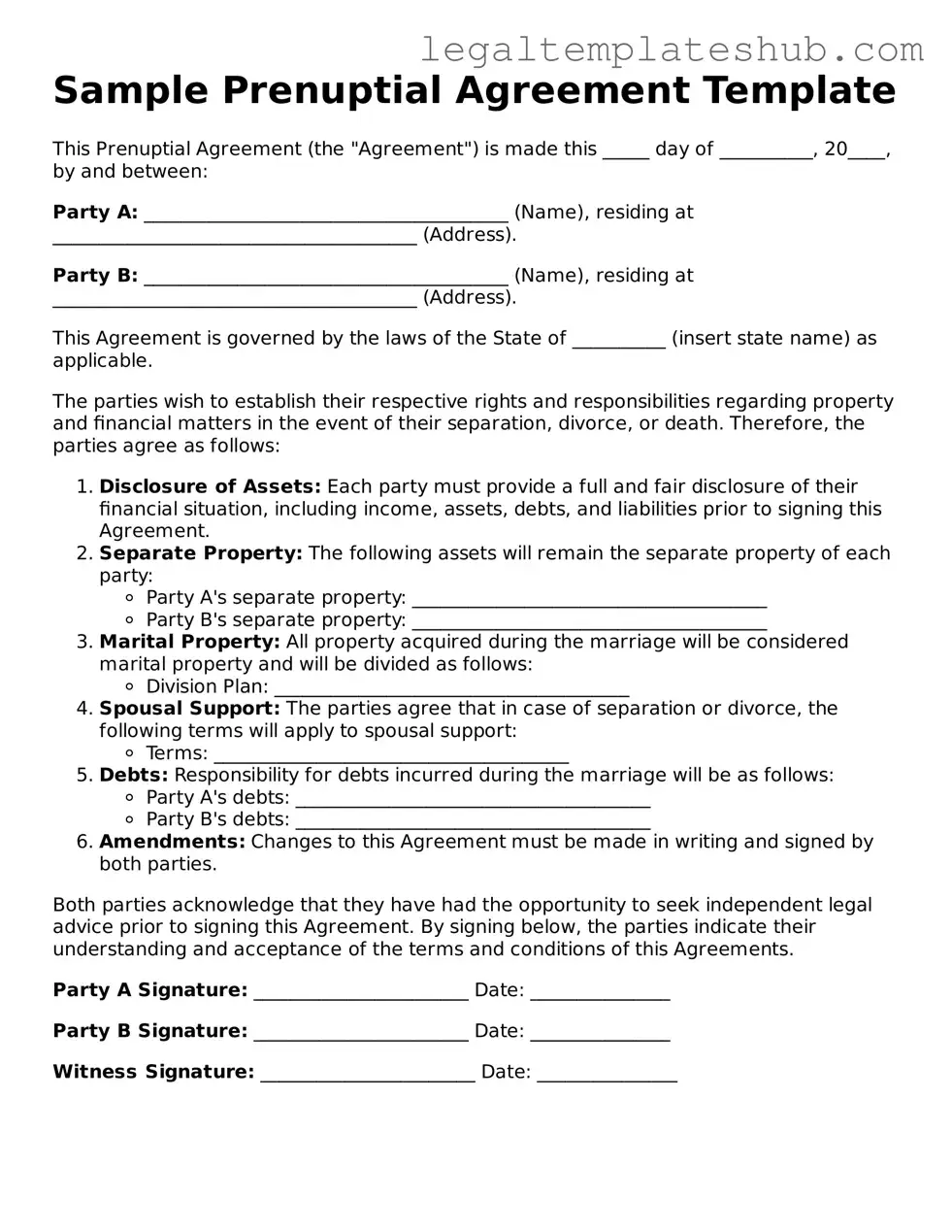Printable Prenuptial Agreement Template
A Prenuptial Agreement is a legal document that couples create before marriage to outline the division of assets and financial responsibilities in the event of a divorce or separation. This agreement can help protect individual interests and provide clarity for both parties. If you're considering a prenuptial agreement, take the first step by filling out the form below.
Access Editor
